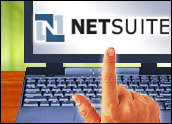
Not that the shows ever end, but as I regain my spot on the ground, I have a few observations from the many shows that I have been to or read about over the last eight weeks.
The ground is moving. For starters…
Platform Is Changing Everything
If you think that cloud platforms are simply a nice alternative to software licenses, you should think again. It’s human nature to apply new technologies to old problems, and that’s what such an approach really does. However, sooner or later — and that means now in this case — the market figures out the true impact of new technology and things change in significant ways.
Platform is like this. For almost 15 years, we’ve seen SaaS and its variants taking up space in the market and picking off niches that were less desirable to the big license software vendors. That idea crossed the chasm just before the Great Recession, which muffled the impact for a few years — but today, subscriptions are back with a vengeance.
All of the shows I’ve been to lately are put on by cloud vendors, and all either have platforms or want to convince you that they are well-behaved citizens in almost any major platform ecosystem. So cloud computing + subscriptions = massive change, but
Subscriptions Are the Tip of the Iceberg
Subscriptions are the first of a long line of new business models that will disrupt business as we know it. The world doesn’t need to move completely to a subscription economy or even a majority subscription economy before subscriptions and other models will have a significant impact on the vendor customer relationship. Hint: It’s already happening.
I got this from my own observations, but they were crystallized by Jeremy Rifkin’s book, The Zero Marginal Cost Society, which I read on airplanes, mostly. Rifkin’s thesis is simple. If you can subscribe, rent, borrow or even better, share something — possibly even make it with your handy-dandy 3D printer — the marginal cost to the consumer becomes something close to zero.
Ditto for home-generated electricity from roof to solar panels and the greatly reduced logistics needed. The implications are significant, because an economy with even 20 percent of its commerce done through subscriptions, exchanges and sharing makes it very difficult for a conventional company to show growth and profits. So what happens to capitalism? Thomas Piketty is fascinated by
Capital in the Twenty-First Century
Piketty’s book, which I also read on airplanes — and which at 577 pages gives you some idea of the amount of travel I have been doing — sees the 20th century with its wars and economic disruptions as an outlier to history.
The average growth rate of the global economy will settle back into a long term range of 1 percent to 1.5 percent (from a Chinese high of up to 10 percent per annum) in this century, Piketty thinks, but that capital growth will maintain an average between 4 percent and 5 percent, resulting in continued and exacerbated inequality.
The top percentiles in Europe own the equivalent of six to seven times GDP as wealth, while in the U.S., the number is more like five to six times, acording to Piketty.
His point? This kind of wealth accumulation could go on for a long time.
However, Rifkin already sees a zero marginal cost society reaction to Piketty, in which capital might become irrelevant. The two books should be read together, as they form a big picture story. What all of this means is that
We Will Need to Deal With the IoT Soon
The Internet of Things (IoT) is growing out of the above-mentioned trends. Subscriptions and platforms — including an Energy Internet and a Logistics Internet that together with the Communications Internet are pushing hard on the zero marginal cost accelerator — drive this.
It makes sense to me that in a market where the individual is free to pursue enlightened self-interest, that zero marginal cost models will become a norm. IoT will be the near-zero cost approach to understanding customers in an attempt to eke out profit when capital becomes mostly irrelevant.
If that happens, it will be the first time the 99 percent had a revolution that didn’t involve bloodshed a la French Revolution — or the American one, for that matter. All of this suggests that sales is no longer the effective end of the CRM stick and that
Marketing Is Leading CRM
Zero marginal costs imply no margin to be dedicated to sales activities or people, so it is very interesting to see the leaps that marketing automation is making. From Eloqua to Marketo to the marketing cloud and more, marketing — with its superior analytics (compared to sales) — is sitting in the catbird seat.
Sales and SFA aren’t about to go away, but all of the above puts more pressure on sales people to come in from the cold and accept modern techniques without the complaints about SFA or CRM that it’s hard to use or that it detracts from selling time. Those arguments simply don’t hold water any more.
I pity vendors using them to sell their favorite sales automation strategies. Interestingly, this affects how we engage, because I think
Customer Engagement Is Wide of the Mark
As customers, we may not want an interrupt-driven broadcast advertising model for relating to vendors, but neither do we want a neurotic relationship with any vendor that is always asking, “How do you like me now?” Who are these guys, Ed Koch?
In a country that highly prizes independence and a go-it-alone mentality — not saying it’s healthy, BTW — the neurotics won’t prevail. What we’ve been iterating toward all these years — and I suspect what causes vendors to develop a rash whenever they think about it — is an interrupt model driven by the customer. I really think that’s it.
The vendors best positioned in an economy that seems to be determined to re-invent itself yet again, are the ones that can best prepare to be interrupted — and not be surprised when it comes. All this suggests greater reliance on platform supported IoT and sensing customer relationships, so here’s a simple question
Can We Please Be Done Trying to Accelerate the Sales Process?
Enough. Done. Finito. Havlicek stole the ball. It’s all over. Railroads accelerated the sales process. So did telegraphs, telephones, automobiles and maybe fax machines. Everything else is anticlimax. Why? If you follow the train (no pun) of the last few sentences, over the last couple of centuries we’ve been reducing the lag time between sales touches, which arguably has reduced the sales process time. Trouble is we’re now down to nearly instant communication, so where do we go from here?
If you’re a high-speed trader, like in Michael Lewis’ new book Flash Boys, you need to work in nanoseconds to affect outcomes. My bet? Not gonna happen in everyday selling in a zero marginal cost world.
The key point is that people playing the customer role still make decisions the way they did before railroads. They think about the decision, weigh the pros and cons, sleep on it, or ask a trusted friend. All of this takes time. If your business really, really needs to accelerate selling, then refer to the point about marketing above.
The way to make it appear that selling is accelerating is to stuff more quality leads and deals into the pipeline and to use good metrics to verify that you aren’t back-sliding.
The End Game – for Now
All this adds up to increased emphasis on the customer buying process, but we also now have to add in the sharing, networking, community-oriented processes too.
I still see plenty of daylight for CRM to prosper, but the relative mix is definitely skewing toward service and marketing as customers continue to pursue their idiosyncratic needs, based on logic they alone fully comprehend.
Meanwhile, whoever has the best platform — one that supports incredibly agile business processes and their constant reformation — might not win but certainly will survive. That’s my view from seat 16B.

























































